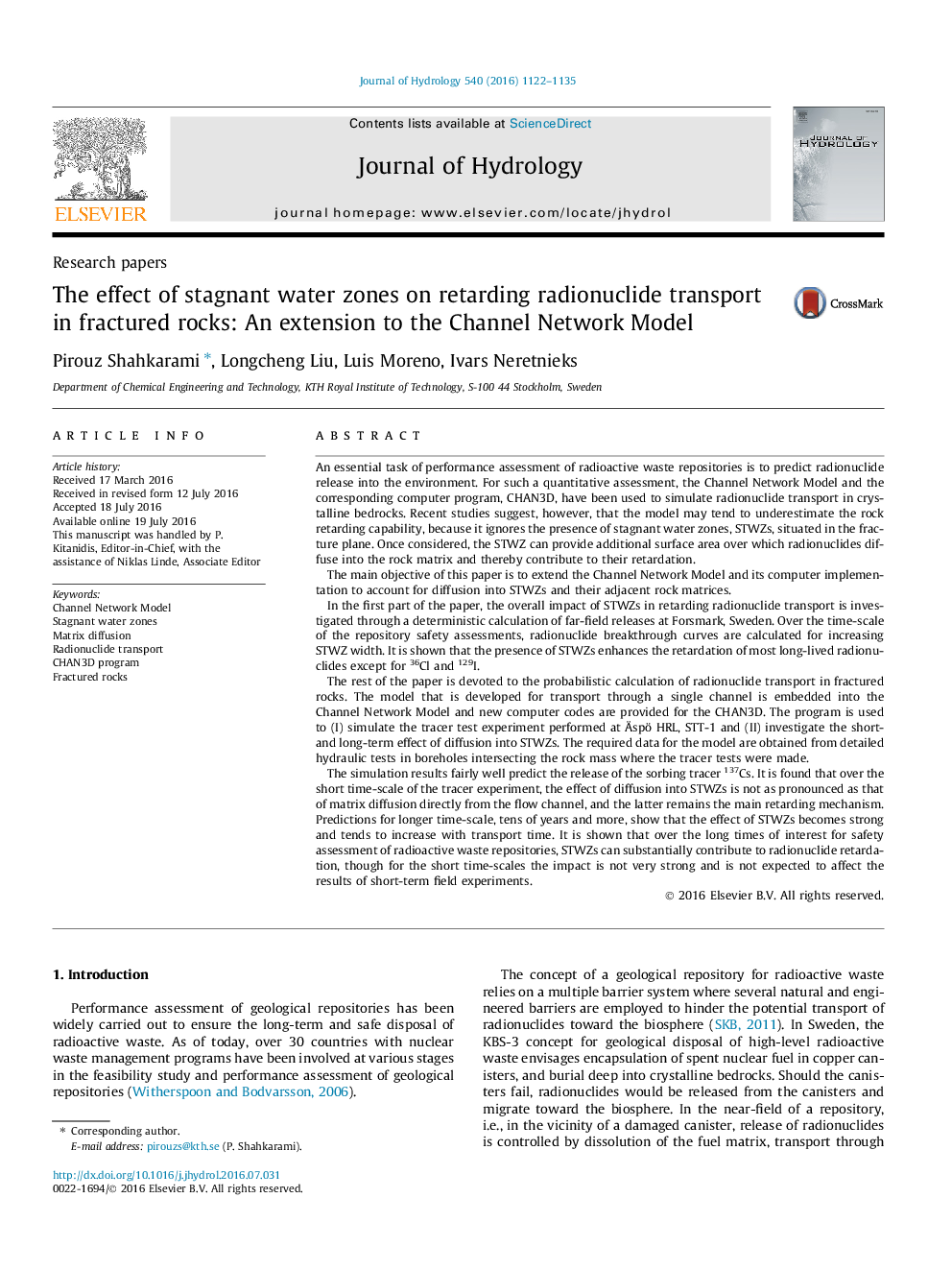| کد مقاله | کد نشریه | سال انتشار | مقاله انگلیسی | نسخه تمام متن |
|---|---|---|---|---|
| 6409708 | 1629912 | 2016 | 14 صفحه PDF | دانلود رایگان |

- The Channel Network Model and the CHAN3D program, are extended to include STWZs.
- Deterministic calculations suggest an important role of STWZs in retarding nuclides.
- Probabilistic calculations are made to investigate short/long-term effect of STWZs.
- Over long times-scales, STWZs can substantially contribute to the nuclide retardation.
- Over short time-scales, STWZs may not affect the results of field experiments.
An essential task of performance assessment of radioactive waste repositories is to predict radionuclide release into the environment. For such a quantitative assessment, the Channel Network Model and the corresponding computer program, CHAN3D, have been used to simulate radionuclide transport in crystalline bedrocks. Recent studies suggest, however, that the model may tend to underestimate the rock retarding capability, because it ignores the presence of stagnant water zones, STWZs, situated in the fracture plane. Once considered, the STWZ can provide additional surface area over which radionuclides diffuse into the rock matrix and thereby contribute to their retardation.The main objective of this paper is to extend the Channel Network Model and its computer implementation to account for diffusion into STWZs and their adjacent rock matrices.In the first part of the paper, the overall impact of STWZs in retarding radionuclide transport is investigated through a deterministic calculation of far-field releases at Forsmark, Sweden. Over the time-scale of the repository safety assessments, radionuclide breakthrough curves are calculated for increasing STWZ width. It is shown that the presence of STWZs enhances the retardation of most long-lived radionuclides except for 36Cl and 129I.The rest of the paper is devoted to the probabilistic calculation of radionuclide transport in fractured rocks. The model that is developed for transport through a single channel is embedded into the Channel Network Model and new computer codes are provided for the CHAN3D. The program is used to (I) simulate the tracer test experiment performed at Ãspö HRL, STT-1 and (II) investigate the short- and long-term effect of diffusion into STWZs. The required data for the model are obtained from detailed hydraulic tests in boreholes intersecting the rock mass where the tracer tests were made.The simulation results fairly well predict the release of the sorbing tracer 137Cs. It is found that over the short time-scale of the tracer experiment, the effect of diffusion into STWZs is not as pronounced as that of matrix diffusion directly from the flow channel, and the latter remains the main retarding mechanism. Predictions for longer time-scale, tens of years and more, show that the effect of STWZs becomes strong and tends to increase with transport time. It is shown that over the long times of interest for safety assessment of radioactive waste repositories, STWZs can substantially contribute to radionuclide retardation, though for the short time-scales the impact is not very strong and is not expected to affect the results of short-term field experiments.
Journal: Journal of Hydrology - Volume 540, September 2016, Pages 1122-1135